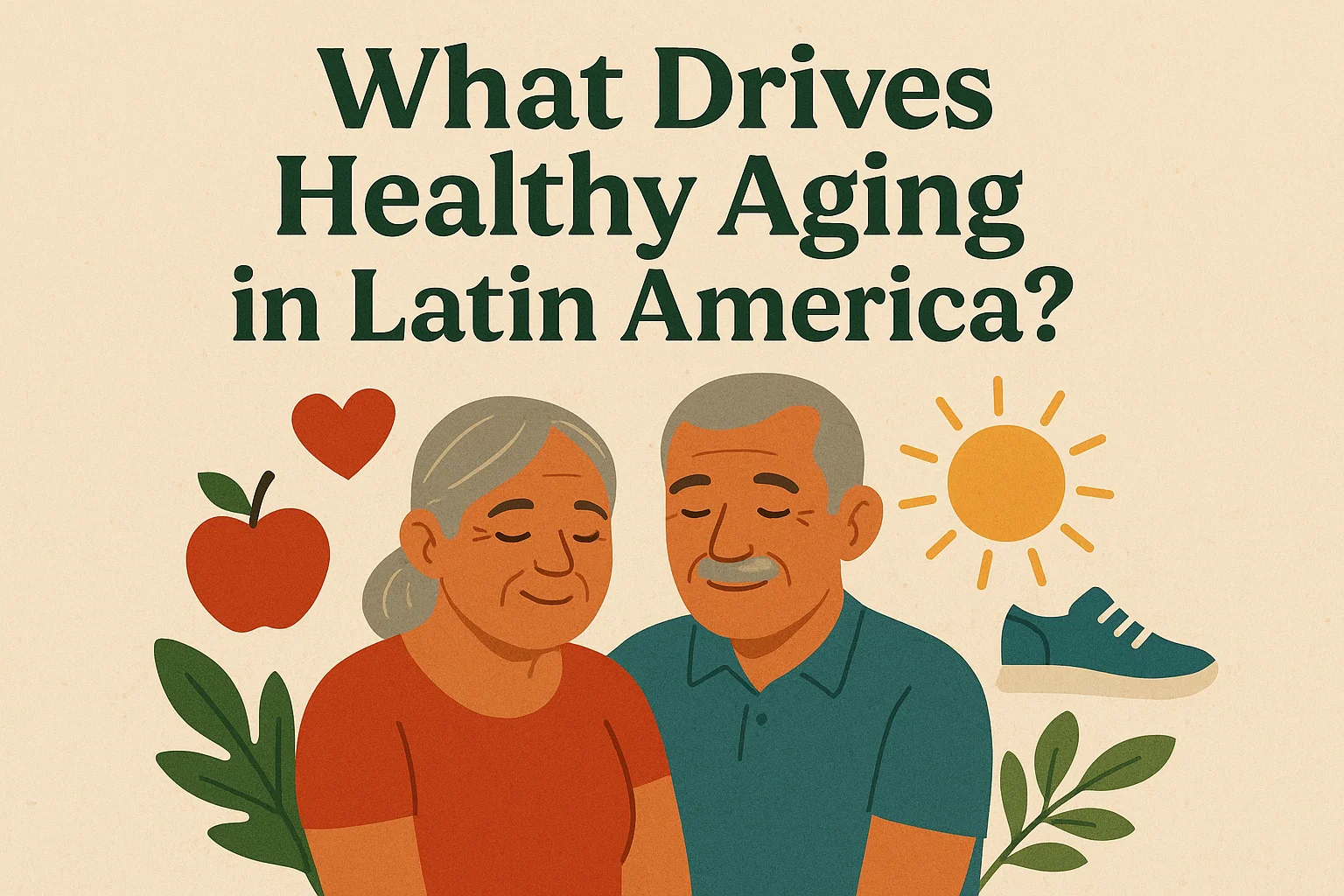A recent study analyzing over 44,000 adults across Latin American and Caribbean nations found that social disparities, mental-health symptoms and cardiometabolic conditions have a stronger impact on healthy aging than chronological age or sex. By applying machine-learning models to measures of cognition and daily function, researchers showed that social determinants of health (β > 0.3), mental health (β > 0.6) and cardiometabolic risks (β > 0.22) each influence outcomes more than age (β < 0.2). These findings underscore the need for region-tailored strategies that tackle inequities and bolster resilience across diverse populations.

Social determinants: Foundations of resilience
Educational attainment, income level and social support networks emerged as pivotal for maintaining cognition and daily independence. Lower schooling and socioeconomic status often correlate with reduced access to preventive services, heightened chronic-stress exposure and fewer opportunities for mentally and physically stimulating activities. Community-based adult education programs and initiatives that strengthen familial and neighborhood ties can therefore yield disproportionate benefits. Deep dives into cellular aging, such as how telomere attrition drives functional decline, reinforce the importance of lifelong learning and social engagement in preserving brain health
Mental health: The overlooked predictor
Depressive and anxiety symptoms proved the single most powerful predictors of decline in both cognitive performance and functional ability. In many parts of Latin America, stigma and resource gaps limit access to psychological support, amplifying risks for isolation and accelerated impairment. Integrating mental-health screenings into primary care, training community health workers in basic counseling techniques and fostering peer-led support groups can disrupt the cycle linking poor mood to cognitive and physical decline.
Cardiometabolic risk: A growing obstacle
High blood pressure, diabetes and obesity accounted for substantial declines in daily function, particularly in upper-middle- and high-income LAC countries where these conditions are more prevalent. Culturally tailored public-health campaigns, promoting home blood-pressure monitoring, community cooking classes emphasizing traditional whole foods, and neighborhood walking clubs, can mitigate these burdens. Similarly, exploring the science of vitrification protocols highlights parallels between preventing age-related molecular damage and preserving tissue integrity under extreme cooling.
Lifestyle factors: Modifiable paths to health
Physical activity, moderate alcohol consumption and smoking status also influenced outcomes. Regular, culturally resonant movement, such as traditional dances, gardening or capoeira circles, supports muscle strength, balance and social connection. Community centers that host intergenerational activity sessions can both reduce isolation and embed exercise into daily routines.
Country-level variability and policy Implications
Although age and sex had smaller effects overall, their impact grew in wealthier LAC nations, indicating that once disparities shrink, biological factors regain prominence. Variation between countries, rooted in policy, infrastructure and cultural practices, calls for flexible, locally informed approaches rather than uniform solutions. Urban design that prioritizes walkable streets and accessible green spaces, combined with subsidies for healthy foods, can create environments that naturally promote daily movement and balanced diets.
Strategies for Equitable, Culturally Tailored Interventions
Education and economic opportunity: Expand adult literacy and microcredit programs to buffer against cognitive decline linked to low socioeconomic status.
Mental-health integration: Deploy task-shifting models where trained non-specialists deliver counseling in community settings.
Cardiometabolic outreach: Use mobile clinics and telehealth to provide blood-pressure and glucose monitoring in remote areas.
Cultural movement programs: Leverage local traditions, dance troupes, community farming collectives, to make physical activity socially engaging.
Policy levers: Implement taxes on sugar-sweetened beverages and incentives for corner stores to stock fresh produce.
Empathy and Cryopreservation Options
Facing a terminal diagnosis can be emotionally overwhelming, and lifestyle measures may no longer suffice to halt systemic decline. We understand the weight of such news and the desire to preserve identity, memory and dignity. Cryopreservation is not a cure, but an opportunity to pause biological processes at legal death, safeguarding cells, tissues and neural structures until future advances may allow revival. If you’d like to learn more about how cryopreservation works and explore whether it fits your hopes and values, we’re here to guide you with compassion and clarity.
About Tomorrow.bio
At Tomorrow.bio we are dedicated to advancing the science of cryopreservation with the goal of giving people a second chance at life As Europe’s leading human cryopreservation provider we focus on rapid high-quality standby, stabilization and storage of terminal patients preserving them until future technologies may allow revival and treatment.
Our mission is to make human cryopreservation a reliable and accessible option for everyone We believe that no life should end because current capabilities fall short.
Our vision is a future where death is optional where people have the freedom to choose long-term preservation in the face of terminal illness or fatal injury and to awaken when science has caught upInterested in learning more or becoming a member
📧 Contact us at hello@tomorrow.bio
🌐 Visit our website www.tomorrow.bio
🤝 Schedule a call with our team Book a consultation
References: Santamaria-García, H., Sainz-Ballesteros, A., Hernández, H., Moguilner, S., Maito, M., Ochoa-Rosales, C., Corley, M., Valcour, V., Miranda, J. J., Lawlor, B., … & Ibañez, A. (2023). Factors associated with healthy aging in Latin American populations. Nature Medicine, 29, 2248–2258. https://doi.org/10.1038/s41591-023-02495-1



